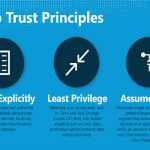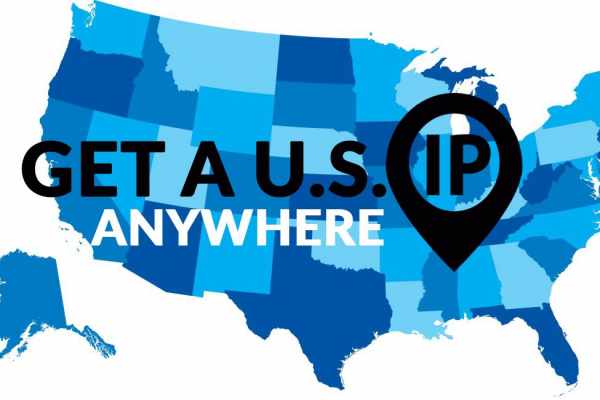Security has become critical as organizations adopt cloud environments and enable employees to work remotely. Cybercriminals are looking for weaknesses in the network to compromise identities and gain access to sensitive information.
Zero Trust requires strict identity verification for every user and device attempting to access a network, regardless of location. This enables organizations to limit lateral movement within the perimeter, protecting the data and applications inside that network.
Table of Contents
User Authentication
Zero trust network access is a security framework that requires everything on your network to be authenticated, authorized and continuously validated. This approach is designed to secure dispersed networks and includes the following:
- Multiple on-premise data centers.
- Cloud providers.
- Workers in different locations need to connect to corporate resources.
Previously, companies relied on traditional network security approaches that followed the “trust but verify” model. Once users and endpoints were authenticated, they became trusted and could move laterally within a network to access sensitive data or systems.
The Zero Trust approach to network security eliminates this risk by ensuring that users are only given access to the resources they need, based on the time and location they are using them. This model also involves a combination of analytics, filtering and logging to verify behavior and continually watch for signals of compromise.
This approach has proven especially important in a distributed environment where employees, contractors and business partners work remotely and need access to network resources unavailable in the physical workspace. It also reduces the risks of insider threats, like malicious phishing attacks or stolen login credentials.
Moreover, zero trust enables security officials to monitor and log every call, file access, and email transmission for indications of malicious activity, making it easier to respond to potential compromises and data breaches. However, it takes a significant investment of staff and smartly deployed technology to ensure that all users are authenticated, that devices are updated with patches and that all applications and resources are secure against attackers.
Device Authentication
In a remote work environment, users, devices, and applications must be authenticated to access the network, ensuring robust security. This requires a zero-trust architecture beyond firewalls to re-authenticate each user, device, or application seeking network access.
A zero-trust architecture segments various subsets of servers, data assets, and applications to separate different areas of the network and removes the ability to directly access these resources without first going through a secure gateway. This segmentation is sometimes referred to as micro-segmentation, and it allows administrators to isolate workloads from each other while still monitoring the flow of information between them.
The concept of least privilege is also essential in a zero-trust network security strategy. Accounts, including service accounts, should have strict policies and permissions to ensure they do not move laterally to access systems that should be off-limits.
Using a least-privilege model also saves time and money because fewer MFA measures need to be employed. It also prevents the escalation of privileges by preventing unauthorized devices from being able to use an overly-permission account, which could enable lateral movement and compromise security.
A zero-trust access policy is a complex set of rules that must be carefully crafted. It can take considerable time to implement, test, and validate before implementing it. The best approach is to create a policy, simulate it on the network with alerts generated when violations occur and fine-tune it over time before applying the policy.
Application Authentication
The role of identity verification is critical to zero trust network access. It allows security teams to ensure that only authorized users and devices can access specific resources. This can help to limit the impact of data breaches, particularly in remote and distributed environments.
As more employees move to remote work and BYOD, traditional perimeter-based security models are no longer sufficient. This has prompted security leaders to consider the need for a zero-trust model.
Zero trust is an approach to securing networks that de-emphasize physical location and focuses on connecting people, devices and applications through the Internet. It enforces strict user authentication rules, least privilege access control, network segmentation and encryption.
A zero-trust model also incorporates multi-factor authentication (MFA), which requires more than a username and password to authenticate a user. This can increase the difficulty for hackers to breach a network by a factor of two, three, or four.
This type of security is essential in remote and distributed environments, where employees can access critical data anywhere. MFA helps identify the source of a suspicious request and can prevent damage from unauthorized access, such as from a janitor who gains stolen credentials.
A zero-trust approach can be challenging to implement, but it can be worth the effort. It can reduce the risk of data loss, minimize the attack surface, and reduce the overall complexity of your security infrastructure.
Access Control
Identity verification is a vital part of zero trust network access. It’s establishing a trusted identity for users to ensure they can access their work apps and systems from the devices and locations they use most. This is necessary to prevent unauthorized access and to protect the business from data breaches, malware and credential theft.
With the influx of remote employees and IoT devices, more than traditional access controls are needed to secure information. In the past, companies had to use firewalls to create a perimeter around sensitive data.
But today’s security challenges mean that users need continuous verification of access to corporate applications and data as they move throughout the organization, across all types of devices, connections and environments. That means implementing strong authentication capabilities, powerful network access control tools, and pervasive application access policies that give users only the permissions they need for their jobs.
In addition to verifying identities, zero trust network access limits lateral movement by creating a “secure segment of one” and prohibits any user from moving outside that zone without authorization. This reduces the surface area for attack and enables organizations to secure their data, workflows, services and applications in distributed hybrid and multi-cloud environments.
While access control is crucial to protecting your organization, choosing a solution that doesn’t negatively impact your workflows or productivity is essential. For example, if users change roles, their access must be updated quickly to continue working on critical files that help them do their job.











